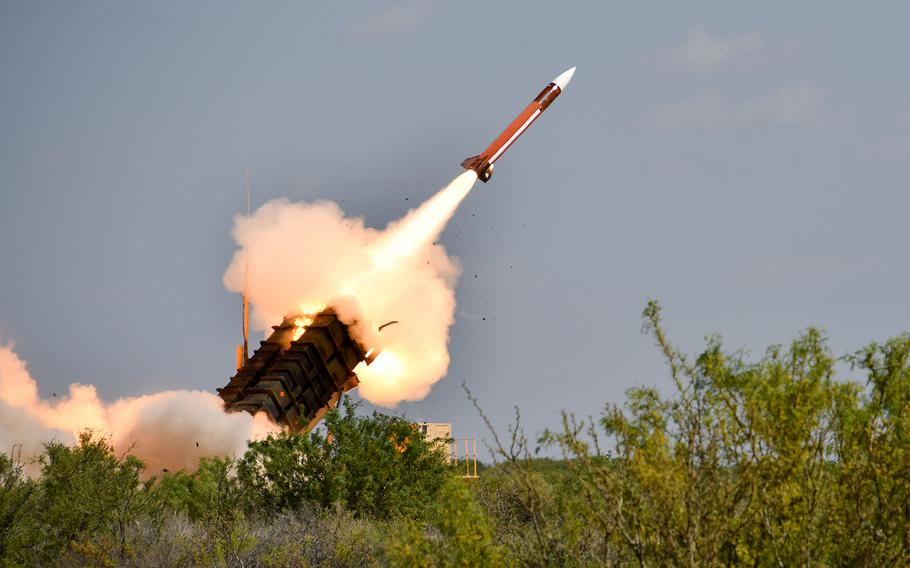
White House national security adviser Jake Sullivan speaks to the press at the White House on Oct. 1, 2024. (Mark Schiefelbein/AP)
WASHINGTON — National Security Adviser Jake Sullivan said Wednesday that the war in Ukraine has revealed the U.S. needs to stockpile more munitions and invest more in producing low-cost weapons.
“This challenge is not one that can be met in a single term in office. There is still so much work to do. This has to be a generational project,” Sullivan said during an event held by the Center for Strategic and International Studies, a Washington think tank.
Since Russia’s 2022 invasion of Ukraine, the U.S. has committed to providing the embattled country approximately $61.4 billion in military aid to help Ukrainian forces fight off Russian invaders. The most recent aid package, totaling $725 million, was announced Monday. It included air-defense weapons, munitions for rocket systems and artillery, and anti-tank weapons.
Doing so means pulling weapons and munitions from U.S. shelves and stockpiles must be replenished each time military aid is provided to Ukraine.
“In a matter of eight weeks of war in 2022, Ukraine burned through a year’s worth of U.S. 155mm artillery production,” said Sullivan, whose office holds daily meetings on Russia and Ukraine. “In those early months in the daily meetings, we reviewed Ukraine’s run rate in excruciating detail. We confronted a startling reality: the American ‘Arsenal of Democracy’ was fundamentally underequipped for the task at hand.”
At the time, the U.S. was producing 14,000 artillery rounds per month and could only immediately boost production by about 400 rounds — enough for Ukraine to defend itself for a few extra hours, he said.
To offset the munition shortage, Ukraine began using off-the-shelf technology and cheap, mass-produced platforms to build an army of drones. But the U.S. was also behind the curve in that technology.
“Our industrial capacity simply wasn’t there,” Sullivan said. “We had to dig ourselves out of a deep hole.”
Insufficient stockpiles were also highlighted by a Rand Corp. study released in November as one of the most urgent matters for NATO countries in a potential long-term war.
Russia’s war in Ukraine has demonstrated “a notable lag” in the buildup of production capacity in Europe and the United States, exposing vulnerabilities when it comes to replenishing munitions at the speed that they are expended, the report said.

A Patriot surface-to-air missile system fires during an exercise with the Dutch military at McGregor Range, N.M., on May 11, 2024. (David Rincon/U.S. Army)
Additionally, conflicts around the world — including the Israel-Hamas war and attacks by Houthi rebels in Yemen on merchant shipping in the Middle East — are eating into U.S. inventory of high-end weapons, such as Patriot air-defense missiles.
Meanwhile, China put the U.S. on notice when it indicated its forces would be ready for conflict by 2027. In November, the commander of the U.S. Indo-Pacific Command raised an alarm over the U.S. arsenal, saying war in Ukraine and in the Middle East is chipping away at weapons and munitions also needed in the Pacific.
“Inherently, it imposes costs on the readiness of America to respond in the Indo-Pacific region, which is the most stressing theater for the quantity and quality of munitions because the [People’s Republic of China] is the most capable potential adversary in the world,” Adm. Sam Paparo said during an event at the Brookings Institution, another Washington think tank.
Sullivan highlighted three major efforts taken by President Joe Biden’s administration to build up the defense industrial base: tearing down obstacles that prevent the U.S. from sharing defense technology with allies, working with commercial industry leaders to develop innovative weapons systems, and ramping up production of weapons and munitions.
In line with this, the U.S. is working with the Ukrainian defense industry, as well as commercial companies, to focus on developing low-cost drones to be used by the U.S. and its allies. The U.S. is also now building more tanks, armored vehicles, rockets, long-range rocket launcher systems and anti-tank missiles, Sullivan said.
“We have made progress over the last four years, but frankly, we need progress over the next 40,” he said.
By January, Sullivan estimated the U.S. defense industrial base will be producing 55,000 155mm artillery rounds per month — a 400% increase. It is on track to reach 100,000 per month by 2026.
“I’m not here to report that the job is finished. I’m here to report the job has started, and now it needs to continue in a big and sustained and bipartisan way,” he said.